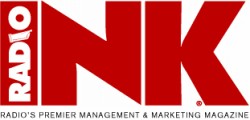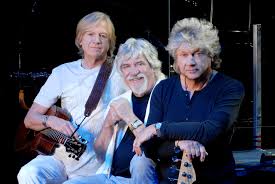

By Eric Rhoads
Publisher: Radio Ink
October 18, 2014
Something unexpected can result in a sea change. That was the case when Radio Ink unintentionally focused on something that had been below the radar concerning the connected car. We had been monitoring the connected car, we knew it was coming, and we knew it would impact how people use audio in the car.
What we did not know, however, was that we would discover a dirty little secret: Radio was losing its relevance in the eyes of many automakers. That part we discovered quite by accident, when I asked some probing questions at Convergence 2013 after I thought I heard one of our connected car panelists talk about dropping AM/FM from the car. Of course, by now you know I spoke out about this possibility — raising both fear and disbelief in the radio industry. I recently addressed this issue in another piece I wrote.
This week we wrapped up the second annual DASH conference, which was rooted in that discussion with the car manufacturers onstage at Convergence . Like a character in a sitcom who’s spun off into a new show, this hot topic panel at Convergence was spun off into its own conference in Detroit.
I partnered Radio Ink with Jacobs Media and with connected-car consultant Valerie Shuman — Jacobs for their deep connections in the car business and their consulting and app building with various brands, and Shuman because of her close relationships within the connected car tribe.
That simple idea has turned into a significant movement we never really expected. Our intent was to create a dialogue between radio and the car companies, first and foremost to make sure they understand the unvarnished truth about radio — its audiences, its pros, its cons, and, most critically, the fact that radio is not a wounded and dying medium, as their Silicon Valley consultants had led them to believe.
Not only are we making good progress on this step, we have the automobile industry deeply interested in radio and in creating that dialogue. This week’s conference was not only much bigger than last year’s, the increases came largely from the automotive industry, and nearly 20 related industries, dominating the room.
You can read the stories and see some of the video from the conference, but the thing I think we are most proud of is that this dialogue has not died down. Nobody’s losing interest; in fact, there’s been more conversation than ever. We have managed to help Detroit understand the importance of radio and what we can offer. Magical moments occurred when our roundtable discussions gave groups problems to discuss, and as car company executives at high levels talked with radio managers, programmers, and even some tech people about how they can improve one another’s business. Word got out about DASH, and the automotive industry was present in full force.
The good news is that we had about the same number of radio people present as last year, with a few new people. But the bad news is that, as WGN‘s Jimmy de Castro put it, “I cannot believe more radio people are not here. I’m going to make sure every possible person is here next year. They have no idea how important this is because they have not heard what we heard here this week, and have no way of knowing unless they attend.” I was approached by several enthusiastic attendees who said the information they received was monumental.
Amazing to me was that the “big guys,” people who handle the marketing budgets for the major car brands, didn’t just show up for a quick onstage appearance, but sat in the audience two full days, taking notes and being actively engaged. They were asking for our ideas on problems they are looking to solve, but also giving us the reality we face, as they see it.
Keynote speaker Gary Shapiro opened the conference; as head of the Consumer Electronics Association, he’s possibly the most powerful man in the world of innovation and electronics, and he’s becoming hugely influential in the auto industry as the International Consumer Electronics Show introduces a new section on automotive technology. And he wasn’t so kind about radio.
Though gracious, Shapiro suggested that radio had ample warning from him and others (including yours truly) that radio had to migrate to digital or it would one day be reinvented by others outside the industry. “Why didn’t you invent Pandora or Spotify?” he said. “You knew this day was coming. You should have invested to invent your new digital competition so you can control it.” It was sobering, but inspirational at the same time. He suggested that radio can still step up to digital in a much bigger way — and must, because the migration by consumers to digital is inevitable.
Everyone in attendance was encouraged about radio. Our show of strength and interest in helping the automotive industry did not go unnoticed. And now, for the second year running, radio has stood out as an industry that wants to show their biggest spending category that we are committed to them.
The effort is far from over. Auto companies are currently designing 2018 models. In 2015, they are expecting 40 percent of car owners to purchase cars that have in-car connectivity (without involving a smartphone). They are designing updatable software so current models won’t be entirely rendered obsolete as technology improves.
Yet those who buy 2015 models are living with decisions made five years ago, many of which involve hard-to-navigate radios. One manufacturer said they’re trying to get things to the point where the consumer does not need 30 minutes of instruction to use the entertainment unit and where they can easily set stations and presets without pulling over. These user interface decisions were made long ago, and only now are some understanding the problems and addressing the issues — many of which would have been ignored had it not been for radio stepping in and raising awareness of how consumers interact with their radio stations.
This is a shining moment in my career and those of my partners in the DASH conference. But this discussion is far from over, and radio must keep positive pressure on the industry to continue this dialogue, and to improve the dialogue at the dealer level as well. Our interaction with dealers and stations opened some incredible discussions about the problems and needs they face, and they even called for radio to step up and help. That would never have happened without DASH.
Though I still think that there is a Silicon Valley mindset within the auto industry — which overall is a good thing — we have made some progress in helping the industry understand more about consumers and their use of radio and the important role it plays in their world. I think most, not all, are moving away from the idea that they want radio only in digital form, though clearly digital radio is high on their list because of the metrics and measurability that go with it. Calls for radio to move in this direction as rapidly as possible were frequent and very much noted by the attendees.
Thanks are in order for our partners in this event for a job well done, and for the team at Radio Ink for their role. Most important, thanks need to go to the auto industry for showing incredible receptivity and open-mindednes,s and to the radio people in attendance who have had their minds opened to things that are changing consumers and in-car audio use forever.
Momentum is building. These events are already having a significant impact on how radio interacts with consumers in the car, and that will only increase in the coming years. Congratulations to all.
Eric Rhoads








